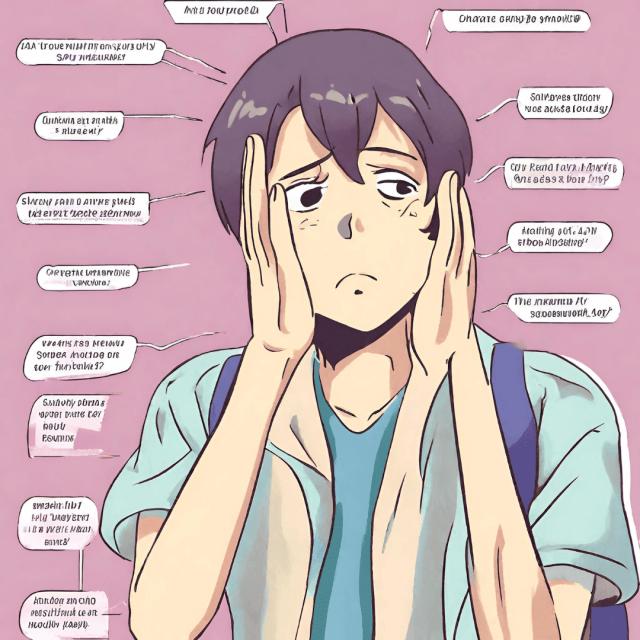Anxiety, a normal emotion, often manifests in response to stress or perceived threats. However, when Anxiety becomes excessive or uncontrollable, it can interfere with daily life, indicating an anxiety disorder. Identifying symptoms is crucial for timely intervention and management.
I. Introduction
A. Defining Anxiety
Anxiety refers to feelings of unease, worry, or fear, often accompanied by physical sensations such as increased heart rate or sweating. While occasional anxiety is a natural response to stress, chronic anxiety can impair functioning and quality of life.
B. Prevalence of Anxiety Disorders
Anxiety disorders are among the most common mental health conditions worldwide, affecting millions of people of all ages. These disorders encompass various forms, including generalized anxiety disorder (GAD), panic disorder, social anxiety disorder, and specific phobias.
C. Importance of Identifying Symptoms
Recognizing symptoms is the first step toward addressing anxiety disorders effectively. Symptoms can manifest differently from person to person, encompassing physical, emotional, cognitive, and behavioral aspects.
II. Physical Symptoms
A. Rapid Heartbeat
One of the hallmark physical symptoms of anxiety is a rapid heartbeat or palpitations. Individuals may experience sensations of their heart racing or pounding, even in the absence of physical exertion.
B. Muscle Tension
Anxiety often leads to muscle tension, resulting in stiffness or soreness, particularly in the neck, shoulders, and back. Chronic muscle tension can contribute to headaches and overall discomfort.
C. Shortness of Breath
Feeling short of breath or experiencing shallow breathing is common during anxiety episodes. This symptom can exacerbate feelings of panic and contribute to a sense of suffocation.
D. Trembling or Shaking
Trembling or shaking hands, legs, or other body parts is another physical manifestation of anxiety. These involuntary movements can be distressing and may worsen in situations of heightened stress.
III. Emotional Symptoms
A. Excessive Worrying
Persistent and excessive worrying about various aspects of life, including work, relationships, or health, is a hallmark emotional symptom of anxiety. Individuals may find it challenging to control their worrying thoughts.
B. Irritability
Anxiety often manifests as irritability or agitation, leading to heightened emotional reactivity and difficulty in managing frustration or anger. Minor stressors may provoke outsized emotional responses.
C. Difficulty Concentrating
Anxiety can impair concentration and focus, making it challenging to complete tasks or absorb new information. Individuals may experience racing thoughts or mental "fogginess" that interferes with cognitive functioning.
D. Restlessness
Restlessness or feeling constantly on edge is a common emotional symptom of anxiety. Individuals may struggle to relax or experience a sense of impending doom without a clear trigger.
IV. Cognitive Symptoms
A. Racing Thoughts
Anxiety can trigger a cascade of racing thoughts, characterized by a rapid and incessant stream of worries, fears, or catastrophic scenarios. These thoughts often feel overwhelming and difficult to control.
B. Fear of Losing Control
Many individuals with anxiety experience a pervasive fear of losing control over their thoughts, emotions, or behaviors. This fear can intensify during anxiety attacks or periods of heightened stress.
C. Catastrophic Thinking
Catastrophic thinking involves imagining the worst-case scenarios or anticipating disaster in various aspects of life. This cognitive distortion fuels anxiety and amplifies feelings of fear and uncertainty.
D. Difficulty Making Decisions
Anxiety can impede decision-making abilities, leading to indecisiveness or avoidance of choices altogether. The fear of making the wrong decision can paralyze individuals, exacerbating feelings of anxiety.
V. Behavioral Symptoms
A. Avoidance
In an attempt to cope with anxiety-provoking situations or triggers, individuals may engage in avoidance behaviors, such as withdrawing from social interactions or avoiding challenging tasks. While initially relieving, avoidance perpetuates anxiety in the long term.
B. Compulsive Behavior
Some individuals with anxiety disorders develop compulsive behaviors as a means of reducing distress or preventing perceived harm. These behaviors, such as excessive handwashing or checking rituals, provide temporary relief but reinforce anxiety cycles.
C. Social Withdrawal
Anxiety can lead to social withdrawal or isolation, as individuals may fear judgment or criticism from others. This avoidance of social situations can exacerbate feelings of loneliness and contribute to the maintenance of Anxiety Symptoms.
D. Substance Abuse
Substance abuse, including alcohol or drug use, is sometimes used as a maladaptive coping mechanism for managing anxiety symptoms. However, substance abuse can worsen anxiety over time and lead to additional health and social consequences.
VI. Conclusion
In conclusion, recognizing and understanding the comprehensive list of anxiety symptoms is crucial for early intervention and effective management of anxiety disorders. By addressing symptoms promptly and seeking appropriate support, individuals can improve their quality of life and regain control over their mental health.
How do I differentiate between normal anxiety and an anxiety disorder?
Normal anxiety typically arises in response to specific stressors and subsides once the stressor is removed. Anxiety disorders involve persistent and excessive worry or fear that interferes with daily functioning.
Can anxiety symptoms manifest physically without any apparent trigger?
Yes, anxiety symptoms can arise seemingly out of nowhere, especially during panic attacks or periods of heightened stress. These physical symptoms can be distressing but are manageable with appropriate coping strategies.
Are anxiety symptoms treatable?
Yes, anxiety symptoms are treatable through various interventions, including therapy, medication, lifestyle modifications, and relaxation techniques. Seeking professional help is essential for developing an effective treatment plan.
What role does lifestyle play in managing anxiety symptoms?
Adopting a healthy lifestyle, including regular exercise, balanced nutrition, adequate sleep, and stress management techniques, can significantly reduce anxiety symptoms and improve overall well-being.
Is it normal to experience anxiety symptoms occasionally even without an anxiety disorder?
Yes, occasional anxiety is a normal part of life and can occur in response to challenging situations or life changes. However, if anxiety symptoms persist or significantly impair daily functioning, it may indicate an anxiety disorder that requires attention.

